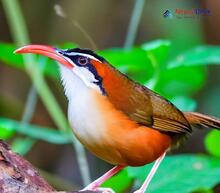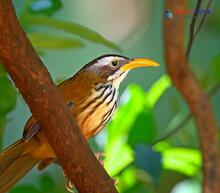Nestled in the heart of the majestic Himalayas, Nepal boasts unparalleled biodiversity. Among its abundant wildlife, one distinct bird genus deserves a closer look – Pomatorhinus. Here, we dive into the intriguing profile of this beautiful genus and the role it plays in Nepal's rich ecosystem.
Introducing: The Pomatorhinus Genus
The Pomatorhinus genus is a group of birds commonly known as scimitar babblers. As part of the family Timaliidae, these fascinating birds are native to Asia, with many species found across diverse habitats in Nepal. The birds are renowned for their striking appearance, featuring long, down-turned bills resembling a scimitar – a type of sword with a curved blade.
Why These Birds Stand Out
What truly sets Pomatorhinus apart from other bird species is its unique mix of physical and behavioral characteristics. These colorful creatures are adorned with black masks and intricate patterns on their plumage. Lively and sociable, they communicate through melodic calls while hopping through the undergrowth searching for food.
One notable member of this beguiling genus is the Rusty-cheeked Scimitar Babbler (Pomatorhinus erythrogenys). Widely distributed across Nepal's montane forests, it can be spotted foraging in dense vegetation or participating in animated chorus sessions with other babblers.
Contributing to The Ecosystem
Like most bird species, Pomatorhinus plays an essential role in maintaining ecological balance. Their primarily insectivorous diet helps control insect populations, preventing damage to vegetation. Additionally, they aid in seed dispersion as some fruit remnants make their way through their diet - hence contributing to plant diversity within the environment.
Conserving Nepal's Treasures: How You Can Help
The preservation of these remarkable birds is crucial. With habitat loss and fragmentation being one of the main threats they face, to ensure the sustainable future of Nepal's unique biodiversity, it is imperative that conservation initiatives be supported. The protection and restoration of their habitats, along with awareness campaigns promoting ecotourism, are some of the ways this can be achieved.
In conclusion, the Pomatorhinus genus presents a spectacular facet of Nepal's rich biodiversity. These captivating birds not only contribute to maintaining ecological harmony but also serve as enchanting symbols of nature's splendor. By prioritizing their conservation and nurturing a deeper connection with nature, we can revel in experiencing these amazing feathered wonders for generations to come.




